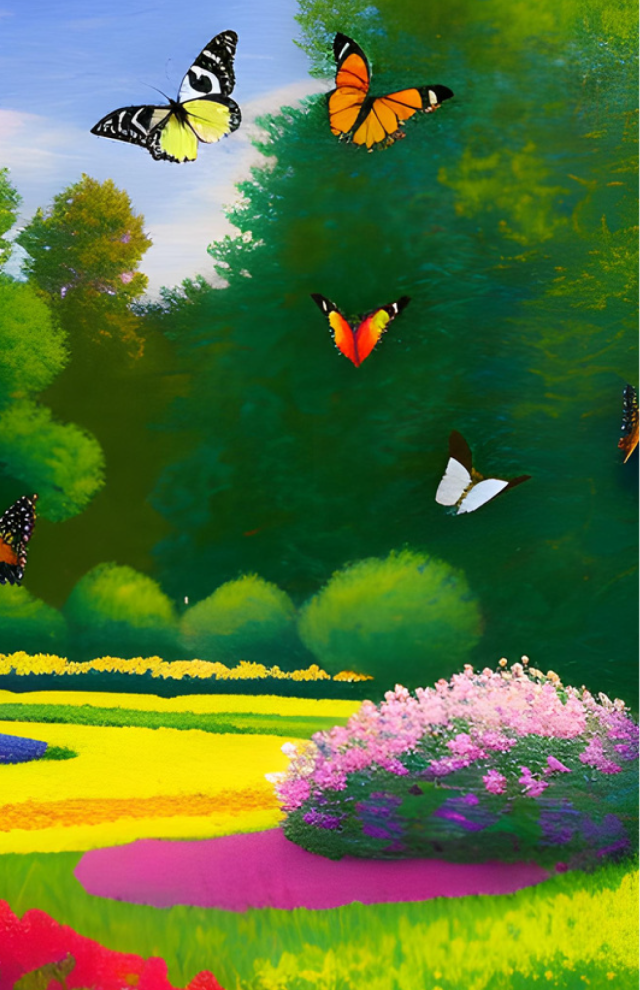The fascination with butterflies has captivated the human imagination for centuries, but it was in America that the concept of butterfly gardens truly took flight. These enchanting spaces, carefully cultivated to attract and sustain butterflies, have a rich and diverse history that mirrors the evolution of environmental awareness, gardening trends, and conservation efforts in the United States.
Early Encounters with Butterflies:
Long before the establishment of organized butterfly gardens, Native American communities across the continent held a deep appreciation for these delicate creatures. Butterflies, with their vibrant colors and graceful flight, were often associated with spiritual significance and were featured in various tribal folklore. However, it wasn’t until the arrival of European settlers that a more systematic cultivation of plants to attract butterflies began.
Colonial Gardens:
In the colonial era, gardens were primarily utilitarian spaces, focused on providing food and medicinal herbs. However, the European settlers couldn’t resist incorporating ornamental plants that attracted butterflies into their landscapes. Flowers such as milkweed, coneflowers, and asters became unintentional magnets for butterflies, providing an early glimpse into the potential for purposeful butterfly gardening.
The Rise of Ornamental Gardening:
As the 19th century unfolded, a shift occurred in American gardening preferences. The rise of the Romantic movement brought about a renewed interest in ornamental gardening, emphasizing aesthetics and the connection between nature and the human spirit. This shift in perspective laid the groundwork for the intentional cultivation of plants that attracted butterflies, creating spaces where the delicate insects could thrive.
The Victorian Era and Butterfly Collecting:
During the Victorian era, the fascination with butterflies reached new heights. While butterfly collecting became a popular hobby among the elite, there was also a growing awareness of the need to preserve these creatures and their habitats. As scientific understanding advanced, a new appreciation for the role of butterflies in ecosystems emerged, setting the stage for the conservation-oriented butterfly gardens that would follow.
Butterfly Gardens for Conservation:
The early 20th century saw a burgeoning interest in conservation and environmental awareness in America. The detrimental impact of industrialization on natural habitats prompted individuals and organizations to take action. Butterfly gardens, with their potential to support local ecosystems, became a focal point for conservation efforts. Organizations such as the National Wildlife Federation and the Audubon Society began advocating for the creation of butterfly-friendly spaces.

The Role of Public Gardens:
Public gardens played a pivotal role in popularizing butterfly gardening in America. Botanical gardens and nature reserves began to incorporate designated butterfly habitats into their landscapes. These spaces not only showcased the beauty of butterflies but also educated visitors about the importance of preserving their habitats. This public awareness helped spread the concept of butterfly gardening beyond the confines of private landscapes.
The Monarch Butterfly and Milkweed Conservation:
The Monarch butterfly, with its remarkable migration spanning thousands of miles, became a flagship species for butterfly conservation. The discovery that Monarchs rely on milkweed plants for breeding prompted a focused effort to conserve milkweed and, by extension, the Monarch population. Butterfly gardens designed specifically to support Monarchs became popular, featuring milkweed varieties as essential components.
Educational Initiatives:
In the latter half of the 20th century, educational initiatives further propelled the popularity of butterfly gardens. Schools, nature centers, and environmental organizations embraced the concept as a hands-on way to teach children about the interconnectedness of ecosystems. Butterfly gardening kits and educational materials made it easy for individuals of all ages to create their own butterfly-friendly spaces.
Modern Trends and Challenges:
Today, butterfly gardens continue to evolve. Urbanization and habitat loss pose new challenges for butterfly populations, making the role of butterfly gardens even more critical. The rise of community gardens and the integration of sustainable landscaping practices contributes to a growing movement of individuals striving to create environmentally friendly and butterfly-supportive spaces in their neighborhoods.
The history of butterfly gardens in America reflects a journey from unintentional attractions in colonial gardens to intentional conservation efforts in the modern era. From the early fascination with butterflies to the establishment of dedicated spaces for their preservation, butterfly gardens have become not only aesthetically pleasing landscapes but also vital contributors to the protection of these delicate creatures and their ecosystems. As we continue to face environmental challenges, the legacy of butterfly gardens stands as a testament to the enduring human commitment to coexist with and conserve the natural world.


 Previous
Previous

